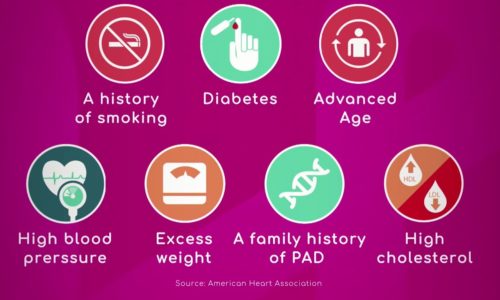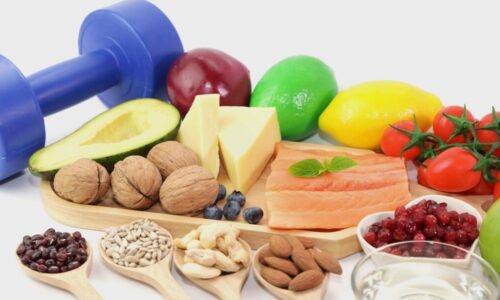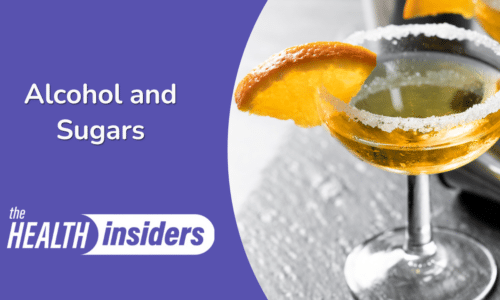How Reading Food Labels Can Help You Make Your Kitchen Greener! |
Join host Olga Villaverde and registered Dietitians Terry Ochoa and Angie Placeres as they have a conversation about the impact reading food labels can make when buying your groceries.
Transcript
okay so back to our riddle how do you make your kitchen greener without adding plants or veggies
well believe it or not it just starts with a food label that’s how easy it is let’s find out more from our nutrition insiders with reference to what we’re talking about now with the uh environment and such one of the things is seeing where they come from it’ll give you where the food comes from
and the further it comes from the more food print you have the more carbon footprint as well
so that’s one of the things you can look at other things very important is to see what it says is it natural nowadays people love to see the word natural natural has no meaning to us at this
point because natural can mean almost anything so what should we look out for we should look for what the ingredients are what are those ingredients that are in there what you know and what order they’re coming from are they you know what are you buying you read on the label that you want lychees well obviously the first ingredient should be lychee if it has water sugar and then lychee you know that you got 50 water the next amount of the food of the item is going to be sugar and then you get some lychees so it those are the things but for our topic today i guess the most important thing is to see where it’s coming from is it from here is it from indonesia you know the further it comes from and angie i think that labels are changing right they’ve changed it made it a little bit more bolder and bigger updating them some of you’ll you’ll see both you’ll see the older one and the newer one i think i believe they keep changing the date i believe it’s january of 2020 so coming up very soon all the labels will be the new format and we’ve shown it a couple times on the show maybe we can do another we’ll do that next right maybe next month or the month after we’ll show the new label and it’s just kind of accentuating the calories and the serving sizes a little bit bigger and they’re looking at some nutrients like vitamins a and d and potassium which before we didn’t really see and calcium in terms of the percents so those are some of the different things but always the label is for your information so exactly look at the labels sometimes we pick things off the you know we kind of say oh low fat low salt something like that and we said we take it for granted no sugar added but what’s really in the product like terry was saying is the first ingredient water and then some sugar and then they have the fruit that’s not really what you want you want to look for something that has fruit first or maybe buy less packaged items by more like we’re saying locally from your farms and your different farmers markets and that way you know you’re getting definitely the real food i remember angie on the show and i just want to tell our viewers this cause i think everybody should know this because a lot of people like salt especially hispanics yes you know they put salt on everything i grew up with salt everywhere and you taught me in the label to look for what percentage less than 20 less than 20 so there’s a little tip in case you like salt find something that’s less than 20 and it’s not too bad anything above that delete delete uh what about genetically modified is that going to be on a label ever it is on the label it is on the level it is what does that mean when you see genetically modified well it means that that specific item so if it’s a grain that grain has been altered in some way and it’s usually done for the purpose of having the ability to grow much faster hardier against like bacteria and stuff like that so for preservation right right so that’s what the genetically modified organism is what actually what it means so we have to be careful though because just because it says non-gmo on the bottom if it hasn’t been certified we can’t be sure oh i see yeah so make sure you see that yes all right i have to hone in on that one so much to remember uh i do want to take a moment to remind our viewers and we want you to remember this our phone number toll free number hear from you 855-796-4475 thing that we’re hearing a lot of is farm to table it’s like a big buzzword that restaurants are really capitalizing on how do we know when we go to a restaurant that we’re really getting that farm to table and explain what it means Angie sometimes you don’t know it’ll say farm to table restaurant you’ll be like oh this is so cool right we’re eating from the farm you just have to be aware of what is really on the menu so you can ask questions is this locally sourced where does this i don’t know lettuce come from where’s this fish raised or where is it chosen or chosen listen to me where are you where’s it fished right so asking those questions if the waiter doesn’t know have them go back and find out and then bring you the information and maybe even do some research online before you go to that restaurant just to make sure is it really legit or is it just this new trendy thing that we’re reading about and seeing a bottle over instagram and facebook and whatnot farm to table yeah it sounds great but is it real so we don’t want to be you know falling into the trends and then they’re like sometimes gimmicks although there is definitely a good if it’s truly farm to table it’s going to be more of what we call the fresh and locally harvested which is what we want that’s the goal so if we see a veggie for example that we know is out of season do we ask hey where’d you get it where did you get it from where’d you get the broccoli huh where’d it come from so think about it and so to that point um if you do enjoy asparagus it’s not going to be local and it doesn’t mean that it isn’t a farm to table restaurant either right as long as they’re serving other foods that are farm to table you you have um but if you have a let’s say if you have avocados right now they’re not in season for us so that’s not going to be from here let’s find out where it’s from you just have to be more aware of what you’re eating exactly and and and ask questions and ask questions exactly get informed how do we make dining out more environmentally friendly well farm to table yeah that would be a good one um just finding out where they’re sourcing their food from that even if they’re not considering themselves farm to table if they are serving things that we do have here local that they are purchasing it from us and so we ask we are the consumer we’re the we’re the paying customer they’re going to listen they’re going to listen to us so that’s what we need to do um there’s lots of other things from ordering sharing and sharing that appetizer sharing that meal we were just talking about it a couple of minutes ago there are some restaurants that serve family sell yet everybody buys a different orders a different dish and when you come to look oh my god you could feed a family of 20 for for what you purchased amongst four so sharing taking home of course um the leftovers some people Angie you’re you know about this more than i do yeah the spark the the containers about bringing your containers and i’ve seen that a lot more and i like that it’s you bring your container i don’t personally but i’ve seen it and i’m like oh that’s kind of cool but i do ask for togo containers all the time because i’m a petite person so i don’t want to eat the thousand calories they put in front of me so okay i’m gonna eat one fourth of this and sometimes i’ll even ask for it at the beginning and that way really helps you not to overeat because you know it looks delicious you’re in a social gathering you’re eating and having fun and maybe having a little bit of alcohol which sometimes decreases your inhibitions right so we want to just make sure we’re not overdoing it so those containers work great even for portion control and that’s so the take out so take out it’s a big one so when they do they pack like a package of this
of um the uh napkins they give you extra forks and extra spoons if you’re taking it home and you don’t need it don’t take it with you chances are you’re gonna throw it out don’t take the extra condiments if you don’t need them let’s just waste why are we going to add all this to that landfill there’s just no purpose in it great tips to prevent leaving food prints and if you’d like to watch the
entire episode and get more green tips just download our health channel app








